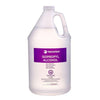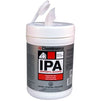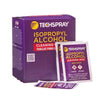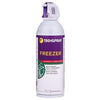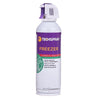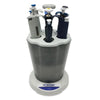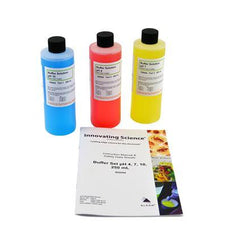- No products in the cart.
Menu
Start typing to see products you are looking for.
Start typing to see products you are looking for.
Browse Categories
-
PPE Apparel
Masks
-
 KN95 Respirator Mask, 4 layers, Box of 50 -LP-KN95-001BOX50
$79.00
KN95 Respirator Mask, 4 layers, Box of 50 -LP-KN95-001BOX50
$79.00
-
 Harley L-188 N95 Particulate Respirator Mask, Box of 20 - LP-L188-N95
$36.00
Harley L-188 N95 Particulate Respirator Mask, Box of 20 - LP-L188-N95
$36.00
-
 Lab Pro Mask KN95 (K-N95) Pack of 50 - LP-MASK2-K95 - 40% OFF
Lab Pro Mask KN95 (K-N95) Pack of 50 - LP-MASK2-K95 - 40% OFF
$125.00$75.00 -
 Lab Pro 3ply Earloop Disposable Mask (Non-Surgical) (Box of 50) - 84% OFF
Lab Pro 3ply Earloop Disposable Mask (Non-Surgical) (Box of 50) - 84% OFF
$57.00$9.00
-
-
Chemicals
-
Wipes
-
Microscopes and Lighting
-
Hand Tools
Hand Tools
-
 Excelta Scissors - 346B - Micro Self-Opening - Straight - SS - Blade Length .38" - 346B
$32.16
Excelta Scissors - 346B - Micro Self-Opening - Straight - SS - Blade Length .38" - 346B
$32.16
-
 Excelta Scissors - Straight Slim Blade - SS - Blade Length 1.25" - 271
$9.83
Excelta Scissors - Straight Slim Blade - SS - Blade Length 1.25" - 271
$9.83
-
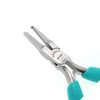 Excelta Pliers - Forming Dog Leg - Carbon Steel - 907-89B
$320.73
Excelta Pliers - Forming Dog Leg - Carbon Steel - 907-89B
$320.73
-
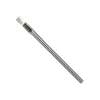 Excelta Brushes - 213A-N - Cleanroom Safe - Straight - SS/Statig09 Bristles - 213A-N
$17.58
Excelta Brushes - 213A-N - Cleanroom Safe - Straight - SS/Statig09 Bristles - 213A-N
$17.58
-
-
Gloves
Powder Free Nitrile Gloves
-
 TrueForm Powder-Free Nitrile Exam Gloves Royal Blue (Small), Case of 1000 (TF-050-095-RB) (10 boxes 100/Box) - N301342
TrueForm Powder-Free Nitrile Exam Gloves Royal Blue (Small), Case of 1000 (TF-050-095-RB) (10 boxes 100/Box) - N301342
$199.00$99.00 -
 PowerForm Nitrile Exam Gloves Black (Medium), Case of 1000 (PF-90BK)(10 boxes 100/Box) - N716883
$237.00
PowerForm Nitrile Exam Gloves Black (Medium), Case of 1000 (PF-90BK)(10 boxes 100/Box) - N716883
$237.00
-
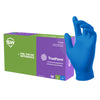 TrueForm Powder-Free Nitrile Exam Gloves Royal Blue (Medium), Case of 1000 (TF-050-095-RB) (10 boxes 100/Box) - N301343
TrueForm Powder-Free Nitrile Exam Gloves Royal Blue (Medium), Case of 1000 (TF-050-095-RB) (10 boxes 100/Box) - N301343
$199.00$99.00
-
-
Swabs and Applicators
Foam Tipped Swabs
-
ESD & Static Control
ESD & Static Control
-
Lab Equipment
-
Pipettes
-
Furnaces and Ovens
Furnaces and ovens
-
All Products
- Services New
-
Industries Served
- Brands
-
Information
-
Blog
-
All blogs
- Aerospace
- Calibration of Lab Equipment
- Chemicals and Solvents
- Cleanroom and Critical Environment
- Electric Battery Labs
- ESD Safety
- Lab Consumables
- Lab Glassware and Glassware Equipment
- Lab Pro’s Top 5
- Laboratory Equipment
- Laboratory Safety & Lab Efficiency
- Medical Adhesives
- Medical Device Industry
- Microscopes, Lighting & Inspection
- News
- Our Blog
- Pipettes
- PPE and Safety Apparel
- Press Release
- Science Education
- Solar Energy Labs
- Sustainable & Eco-Conscious Lab
- Swabs
- Tweezers and Cutters
- Ultrasonic Cleaning
- VMI for Lab Supplies
-
All blogs
- Contact
General Chemistry
Lab Pro’s general chemistry lab kits and supplies are practical tools that come in different sizes to help your students understand basic chemistry concepts. Get your learners inspired with our paper chromatography materials, chemistry labware kits, periodic table posters, buffer calibration kits, luminol blends, and more, available in different dimensions and capacities.
Please give us a call or chat with a customer service representative for bulk orders or urgent inquiries. We also offer next-day service in California and same-day service for will-calls.
Science Education
Please give us a call or chat with a customer service representative for bulk orders or urgent inquiries. We also offer next-day service in California and same-day service for will-calls.
- Home
- All Categories
- Science Education
- General Chemistry
- Sort by
- FILTER BY PRICE
-
-
Below $100.00
-
$100.00-199.00
-
$200.00-299.00
-
$300.00-399.00
-
$400.00-499.00
-
Above $500.00
-
- FILTER BY COLOR
-
-
- FILTER BY SIZE
-
-
S
-
M
-
L
-
XL
-
2XL
-
3XL
-
- FILTER BY BRAND
-
-
Adidas
-
Camel
-
Motorola
-
Rolex
-
Samsung Galaxy
-
Seiko
-
Sony
-
Buffer Calibration Kit 250ml -IS5054
$14.09This kit includes 250mL of each buffer solution pH 7, pH 4, and pH 10 for Academic, Research and Industrial Labs.
Acid Base Strength Chart 11 X 17 Laminated -IS2985
$10.75Easily determine the relative strength of different acids and bases on this laminated 11×17 inch chart.
Ghs Poster -IS2980
$10.75Identify new Global harmonization symbols quickly and easily with this laminated 11? x 17? GHS Poster!
Periodic Table, Vinyl, 4' X 8' -IS2942
$186.00Colored printing helps your students distinguish between metals, non-metals, and noble gas families as well as allowing them to differentiate types of metals, solids, liquids and gasses from synthetic elements....
Periodic Table Pen -IS2920
$4.50The most convenient reference guide available- the Periodic Table Pen. This pen holds a double sided updated 2016 Periodic Table. The back side is a handy miniature reference chart. A...
Co2 To The Rescue Acs Kit -IS2553
$105.00This series of activities, developed by the American Chemical Society through grants from the National Science Foundation and National Institutes of Health, is comprised of a lesson that begins with...
Glow It Up Acs Kit -IS2552
$72.95This lesson, developed by the American Chemical Society through grants from the National Science Foundation and National Institutes of Health, explores chemical reactions that release energy in the form of...
Chemistry's Colorful Clue Acs Kit -IS2551
$54.99This kit and the accompanying teacher’s guide have been developed by the American Chemical Society through grants from the National Science Foundation and National Institutes of Health. Through the lessons...
Chemistry - Investigating Your World Acs Kit -IS2550
$148.00This series of activities, developed by the American Chemical Society through grants from the National Science Foundation and National Institutes of Health, is comprised of four lessons that investigate chemical...
Exploring The Solubility Rules A Guided Inquiry -IS2525
$99.00Take your students on an investigation to determine some of the basic rules of solubility. This experiment challenges students to identify patterns within the experiment and then apply that knowledge...
Periodic Table - Nonmetals, Metals, And Metalloids -IS2524
$68.25During the nineteenth century, a Russian chemist Dmitri Mendeleev, began constructing a table of the elements. The work of Mendeleev allows us to understand that the periodic table of the...
Separation Of A Mixture Of Solids -IS2523
$53.00Performing liquid-liquid extractions allows students to apply their knowledge of the properties of molecules. Students will learn how the properties of solubility can be utilized to separate two solids in...
Chromatography Of Amino Acids -IS2522
$48.75Amino acids are the fundamental building blocks of all proteins. Often times scientists may need to identify the amino acid contained in a protein. One such method for separating and...
Fractional Distillation -IS2521
$44.00Crude oil is a complex mixture of many useful hydrocarbons such as gasoline, kerosene, butane, and motor oil. In order to be of use, these hydrocarbons must first be separated...
A Safer Flame Test: Identifi- Cation Of Metal Lab Activity -IS2520
$99.99The flame test is an analytical technique often used for the identification of certain elements, primarily metal ions. The color of the flame is observed and the spectra of light...
Molarity Lab Investigation -IS2519
$86.50The experiments in this kit have been designed to introduce students to the concept of molarity. Students will first try to make a solution with a specific molarity demonstrating the...







